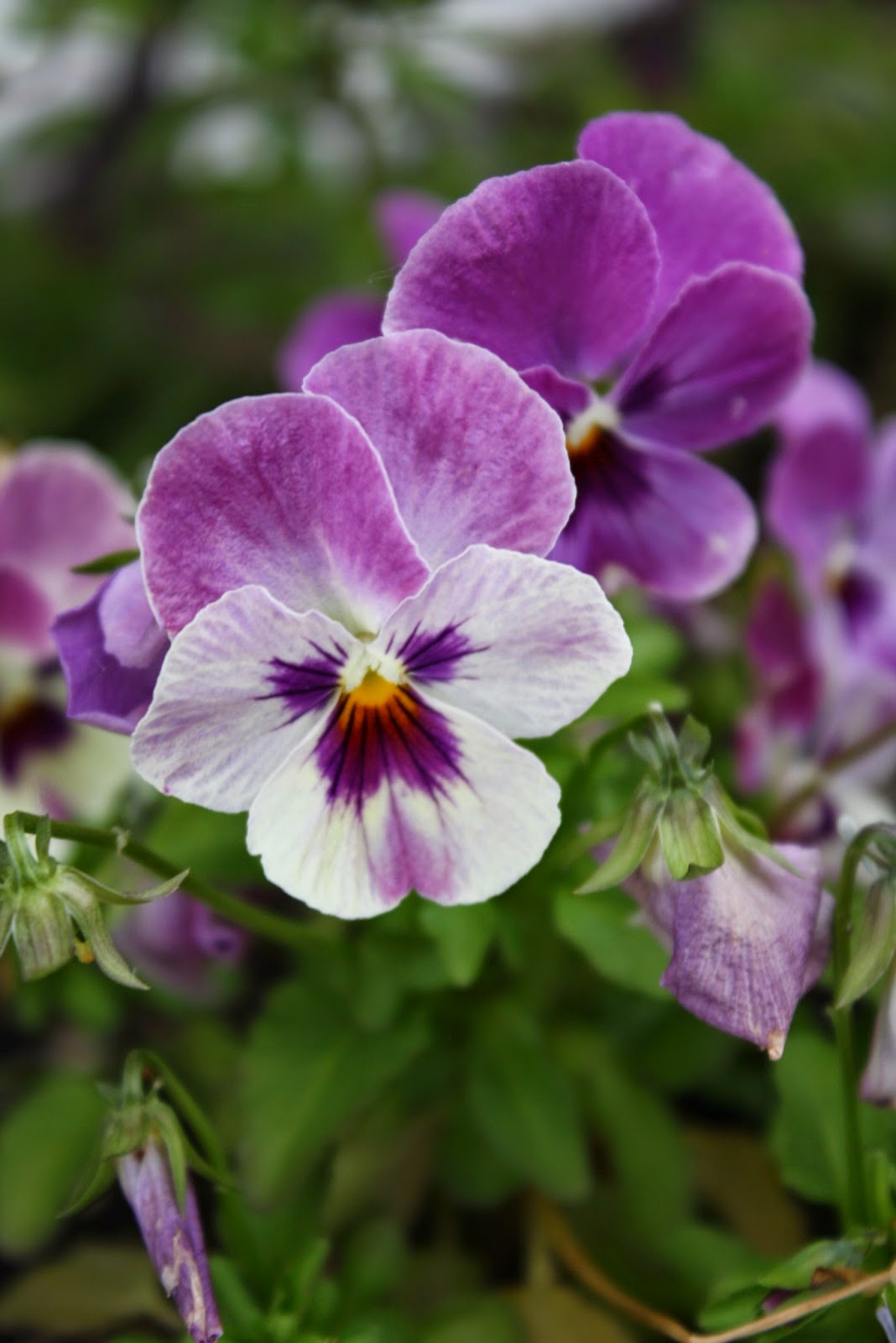Pieris Japonica
I had never seen this plant before we looked at it in the
nursery. It is an evergreen shrub has new
growth in the spring that is colored red which slowly turns green during the
summer. In addition the plant produces
groups of flowers that look like lilies of the valley during the early
spring. We chose this plant for its
ability to cover the gas meter as well as for its beautiful spring foliage. Placement of this plant is important as it
prefers lower amounts of sun exposure and does not do well with high winds.
Mature Height: 4-5ft
Mature Width: 4-5ft
Hydrangea
Hydrangeas are pretty standard fare for landscaping. They produce beautiful flowers and are fairly
easy to cultivate. Our specific brand of
hydrangea is the endless summer variety.
One neat fact about hydrangeas is that the color of the flower indicates
the type of soil you have. With an
acidic soil, pH<7, hydrangeas will produce blue flowers. With a more basic, or alkaline soil, pH>7,
hydrangeas will produce pink flowers. We
were a little concerned about the placement of this plant as the front of our
house gets a lot of wind during the year, but so far we haven’t lost any
flowers.
Mature Height: Whatever Works, prune to size
Mature Width: Ditto
Little Princess Spirea
The Spirea is a deciduous shrub that is great for planting
at the edges of landscaping. It is a
good candidate for planting under trees for ground cover. Its small flowers are also very nice as they
add a splash of pink color to your landscaping.
Mature Height: 3-4ft
Mature Width: 5-6ft
Pyramidal Juniper Shrub
Junipers are a fairly common staple in landscaping. They are a hardy shrub that can tolerate a
variety of conditions.
Mature Height: 15-30ft
Mature Width: 10ft
Burning Bush
The burning bush has got to be one of the most well known landscaping shrubs. Its blazing red color is absolutely legendary and works as a nice focal point on that side of our landscaping. One thing about the burning bush is that it takes a lot of work to keep it smaller.
The burning bush has got to be one of the most well known landscaping shrubs. Its blazing red color is absolutely legendary and works as a nice focal point on that side of our landscaping. One thing about the burning bush is that it takes a lot of work to keep it smaller.
Mature Height: 6-8ft
Mature Width: 4-6ft
Green Velvet Boxwood
The boxwood is a fairly versatile plant, and this variety works great for making a hedge. In our case we placed them under our windows and along our walkway.
The boxwood is a fairly versatile plant, and this variety works great for making a hedge. In our case we placed them under our windows and along our walkway.
Mature Height: 3-4ft
Mature Width: 3-4ft
Blue Star Juniper
These little guys are great for ground cover. In a few years they will completely block the view of our vent pipes.
Mature Height: 2-3ft
These little guys are great for ground cover. In a few years they will completely block the view of our vent pipes.
Mature Height: 2-3ft
Mature Width: 3-4ft
Green Tower Boxwood
Another variety of boxwood, this one is great for growing tall. We used it right next the to the slab outside of our front door.
Mature Height: 9ft
Another variety of boxwood, this one is great for growing tall. We used it right next the to the slab outside of our front door.
Mature Height: 9ft
Mature Width: 1-2ft
Goldflame Spirea
This is another great variety of spirea. This one will have new growth that is yellow and has bright pink flowers.
Mature Height: 3-4ft
This is another great variety of spirea. This one will have new growth that is yellow and has bright pink flowers.
Mature Height: 3-4ft
Mature Width: 5-6ft
Dwarf Crimson Barberry
This little beauty stays red all season long. This version of barberry stays small and is great underneath our blue spruce.
This little beauty stays red all season long. This version of barberry stays small and is great underneath our blue spruce.
Mature Height: 2ft
Mature Width: 2ft
Blue Spruce on a Stick
This plant serves as a beautiful centerpiece. It won't grow much bigger but it will become fuller.
Mature Height: 3-5ft
This plant serves as a beautiful centerpiece. It won't grow much bigger but it will become fuller.
Mature Height: 3-5ft
Mature Width: 5-6ft
Helmonds Pillar Barberry
This is another variety of barberry that works great to frame the garage and not take up a lot of space.
This is another variety of barberry that works great to frame the garage and not take up a lot of space.
Mature Height: 3-4ft
Mature Width: 12-18in
Magic Carpet Spirea
This is another great spirea but will stay slightly smaller and works great next to the garage.
This is another great spirea but will stay slightly smaller and works great next to the garage.
Mature Height: 18-24in
Mature Width: 2ft
Pyramidal Boxwood
This is another fantastic boxwood that are using to block the view of the AC compressor.
I like Turtles
Posts in this series
Design
Prep Work
Planting
This is another fantastic boxwood that are using to block the view of the AC compressor.
Mature Height: 4-5ft
Mature Width: 2-3ft
I like Turtles
Window Dressing
Here are a few nice pictures of the annuals that are around.
The Big Picture
Here are some final photos of our landscaping. I hope you enjoyed our crazy adventure and maybe it even inspired you.
Design
Prep Work
Planting




























.JPG)
